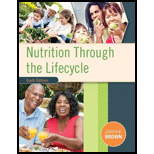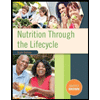
Concept explainers
To mention: Various causes of engorgement.
Introduction: Chronic mastitis is a breast disease that leads to prolonged inflammation. This disease occurs in the case of a mother who avoids breastfeeding. Breastfeeding is the most important and natural way to feed a newborn baby. Mother’s milk provides all the nutrition and immunity to the baby, which is needed during the first six months. Breastfeeding satisfies their hunger and thirst, and provides the proper amount of proteins, minerals, and immunity to the child, which helps to deal with the environment.
Explanation of Solution
Person B was pregnant at the age of 29 and during her pregnancy she had reported experiencing breast enlargement. After two hours of postpartum, her newborn was put to the breast and the infant latched well according to the mother. The infant was nursed over the initial 3-4 days of postpartum in every two hours. Person B was noticed with heavy breast during the third day of postpartum and gradually, she felt painful engorgement by the fourth day of postpartum. During this time, she also reports painful, burning sensation and cracks in her nipples. Due to breast engorgement, the infant is unable to latch properly to the breast. This makes the infant irritable. Person B consulted a lactation consultant and follows engorgement management. On the fifth day, the engorgement caused discomfort. The nipples of Person B became more cracked and painful because the vigorous latching of the infant. In the case of the infant, all the symptoms show about the adequate intake of nutrition. By the seventh day of postpartum, Person B had mastitis and consulted a lactation consultant for treatment. By the fourteenth day, her symptoms became very less and she felt much better. During the third week, while feeding the infant, she still had inflammation, a healing crack, and still some symptoms of chronic mastitis were present.
Again, she consulted the lactation consultant who helped Person B to position the infant in a comfortable way that mostly allows the drainage of the inflamed area and recommends her to pump the affected side to relieve the discomfort during breastfeeding. Then, Person B continued to show the signs of oversupply like breast feeling full after feeding and excess leakage of milk between feedings. Her lactation consultant provided techniques to decrease the overproduction of milk. After 10 days of burning pain in the nipples, Person B is treated with fluconazole for a yeast infection. Again after the seventh week of postpartum, Person B consulted the lactation consultant to report about another mastitis condition. Her consultant prescribed dicloxacillin for treatment. During the eighth week of postpartum, her mastitis condition resolved but the pain was still present in her nipples. Also, she is improving from mastitis condition.
In this case study, the causes of engorgement in breasts of Person B are as follows:
- Instability between the demand and the supply of breast milk
- Excess production of breast milk
- Improper breastfeeding techniques
- Infrequent or ineffective removal of milk from the breast
Want to see more full solutions like this?
Chapter 7 Solutions
Nutrition Through the Life Cycle (MindTap Course List)
- The term _______________________ means pertaining to birth. natal perinatal postnatal prenatalarrow_forwardSherrise is a sexually active college student. On Saturday night, she has unprotected sex with her boyfriend. On Tuesday morning, she experiences the twinge of mid cycle pain that she typically feels when she is ovulating. This makes Sherrise extremely anxious that she might soon learn she is pregnant. Is Sherrises concern valid? Why or why not?arrow_forwardWould ISCI be an option? Why or why not? Jan, a 32-year-old woman, and her husband, Darryl, have been married for 7 years. They have attempted to have a baby on several occasions. Five years ago, they had a first-trimester miscarriage, followed by an ectopic pregnancy later the same year. Jan continued to see her OB/GYN physician for infertility problems but was very dissatisfied with the response. After four miscarriages, she went to see a fertility specialist, who diagnosed her with severe endometriosis and polycystic ovarian disease (detected by hormone studies). The infertility physician explained that these two conditions were hampering her ability to become pregnant and thus making her infertile. She referred Jan to a genetic counselor. At the appointment, the counselor explained to Jan that one form of endometriosis (MIM 131200) can be a genetic disorder, and that polycystic ovarian disease can also be a genetic disorder (MIM 184700) and is one of the most common reproductive disorders among women. The counselor recommended that a detailed family history of both Jan and Darryl would help establish whether Jans problems have a genetic component and whether any of her potential daughters would be at risk for one or both of these disorders. In the meantime, Jan is taking hormones, and she and Darryl are considering alternative modes of reproduction. Using the information in Figure 16.4, explain the reproductive options that are open to Jan and Darryl.arrow_forward
- After hearing this information, should Sue and Tim feel that their chances of having a child with a cleft lip are increased over that of the general population? Sue and Tim were referred for genetic counseling after they inquired about the risk of having a child with a cleft lip. Tim was born with a mild cleft lip that was surgically repaired. He expressed concern that his future children could be at risk for a more severe form of clefting. Sue was in her 12th week of pregnancy, and both were anxious about the pregnancy because Sue had had a difficult time conceiving. The couple stated that they would not consider terminating the pregnancy for any reason but wanted to be prepared for the possibility of having a child with a birth defect. The genetic counselor took a three-generation family history from both Sue and Tim and found that Tim was the only person to have had a cleft lip. Sues family history showed no cases of cleft lip. Tim and Sue had several misconceptions about clefting, and the genetic counselor spent time explaining how cleft lips occur and some of the known causes of this birth defect. The following list summarizes the counselors discussion with the couple. Fathers, as well as mothers, can pass on genes that cause clefting. Some clefts are caused by environmental factors, meaning that the condition didnt come from the father or the mother. One child in 33 is born with some sort of birth defect. One in 700 is born with a cleft-related birth defect. Most clefts occur in boys; however, a girl can be born with a cleft. If a person (male or female) is born with a cleft, the chances of that person having a child with a cleft, given no other obvious factor, is 7 in 100. Some clefts are related to identifiable syndromes. Of those, some are autosomal dominant. A person with an autosomal dominant gene has a 50% probability of passing the gene to an offspring. Many clefts run in families even when there does not seem to be any identifiable syndrome present. Clefting seems to be related to ethnicity, occurring most often among Asians, Latinos, and Native Americans (1 : 500); next most often among persons of European ethnicity (1 : 700); and least often among persons of African origin (1 : 1,000). A cleft condition develops during the fourth to the eighth week of pregnancy. After that critical period, nothing the mother does can cause a cleft. Sometimes a cleft develops even before the mother is aware that she is pregnant. Women who smoke are twice as likely to give birth to a child with a cleft. Women who ingest large quantities of vitamin A or low quantities of folic acid are more likely to have children with a cleft. In about 70% of cases, the fetal face is clearly visible using ultrasound. Facial disorders have been detected at the 15th gestational week of pregnancy. Ultrasound can be precise and reliable in diagnosing fetal craniofacial conditions.arrow_forwardJanine is 41 weeks pregnant with her first child when she arrives at the birthing unit reporting that she believes she has been in labor for days but that its just not going anywhere. During the clinical exam, she experiences a few mild contractions, each lasting about 15-20 seconds; however, her cervix is found to be only 2 cm dilated, and the amniotic sac is intact. Janine is admitted to the birthing unit and an IV infusion of pitocin is started. Why?arrow_forward
 Nutrition Through the Life Cycle (MindTap Course ...Health & NutritionISBN:9781305628007Author:Judith E. BrownPublisher:Cengage Learning
Nutrition Through the Life Cycle (MindTap Course ...Health & NutritionISBN:9781305628007Author:Judith E. BrownPublisher:Cengage Learning Nutrition Through The Life CycleHealth & NutritionISBN:9781337919333Author:Brown, Judith E.Publisher:Cengage Learning,
Nutrition Through The Life CycleHealth & NutritionISBN:9781337919333Author:Brown, Judith E.Publisher:Cengage Learning, Medical Terminology for Health Professions, Spira...Health & NutritionISBN:9781305634350Author:Ann Ehrlich, Carol L. Schroeder, Laura Ehrlich, Katrina A. SchroederPublisher:Cengage LearningCase Studies In Health Information ManagementBiologyISBN:9781337676908Author:SCHNERINGPublisher:CengageUnderstanding Health Insurance: A Guide to Billin...Health & NutritionISBN:9781337679480Author:GREENPublisher:Cengage
Medical Terminology for Health Professions, Spira...Health & NutritionISBN:9781305634350Author:Ann Ehrlich, Carol L. Schroeder, Laura Ehrlich, Katrina A. SchroederPublisher:Cengage LearningCase Studies In Health Information ManagementBiologyISBN:9781337676908Author:SCHNERINGPublisher:CengageUnderstanding Health Insurance: A Guide to Billin...Health & NutritionISBN:9781337679480Author:GREENPublisher:Cengage





